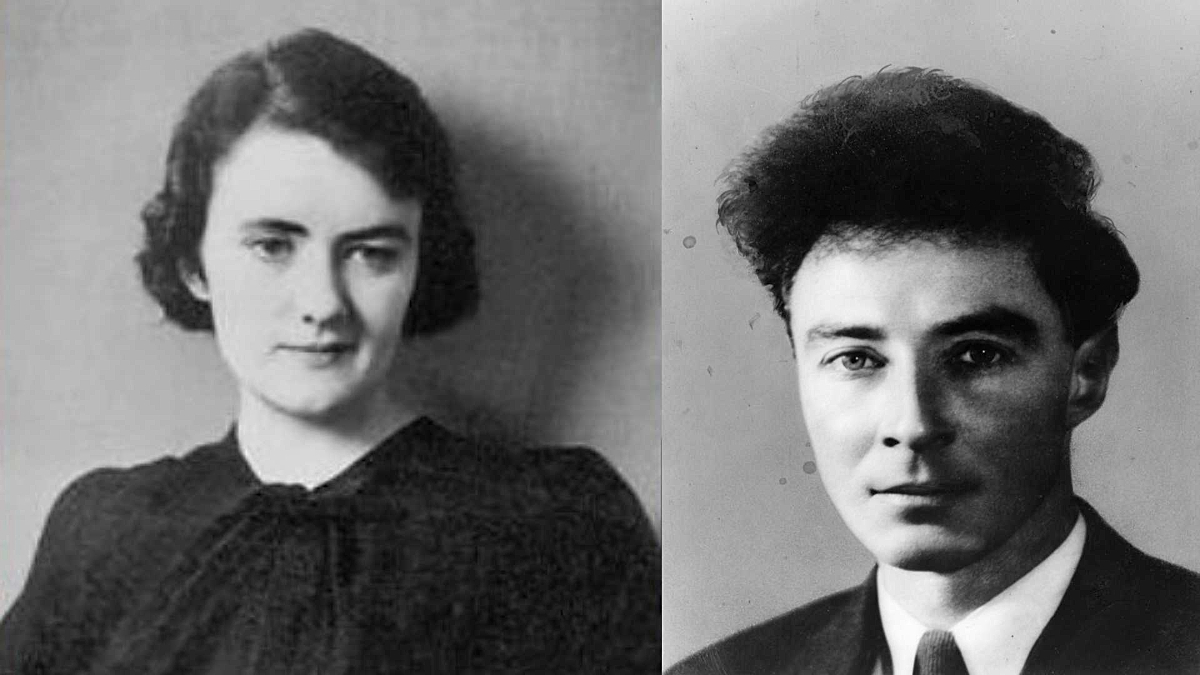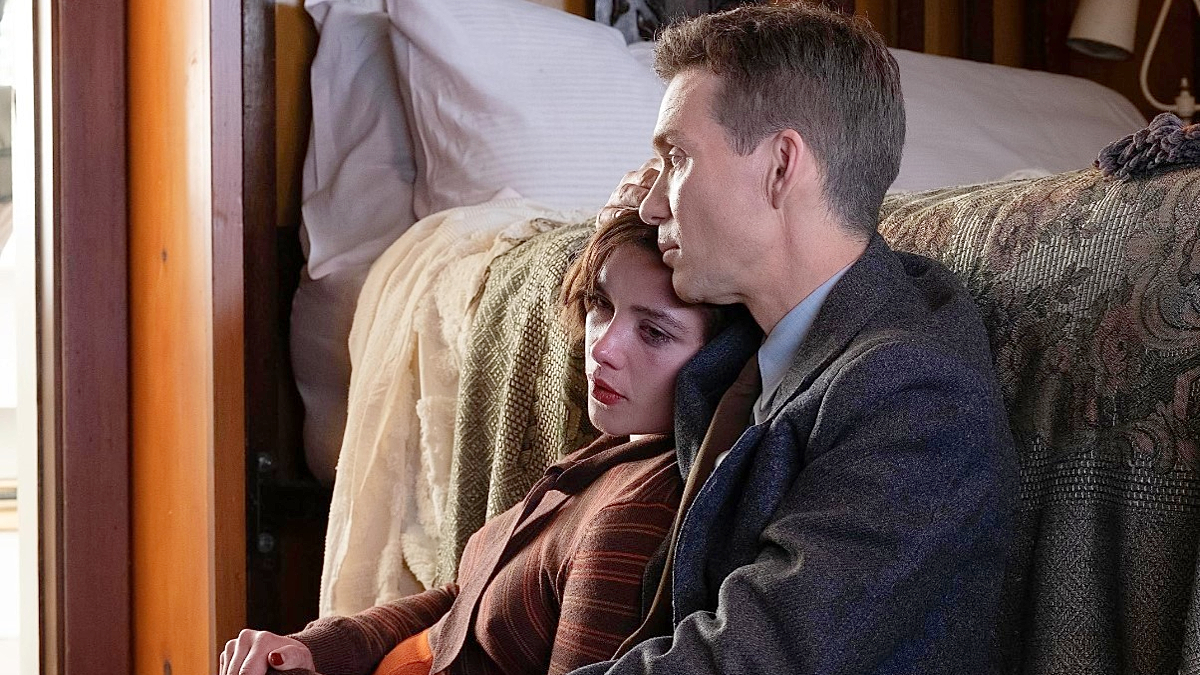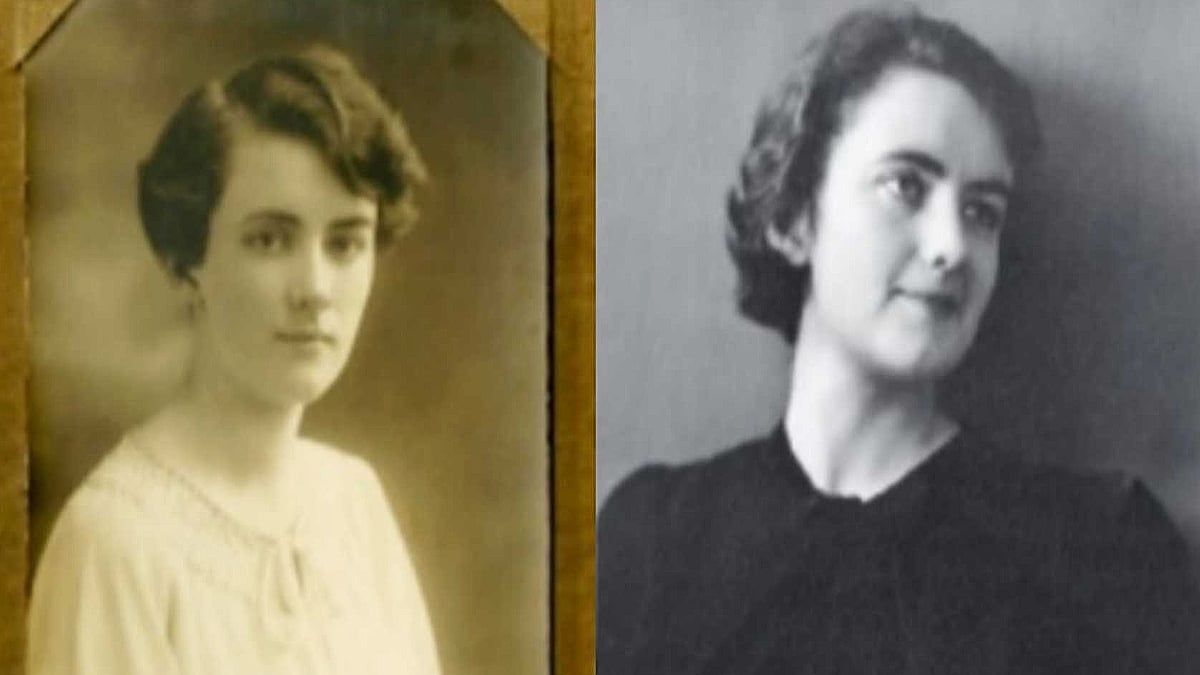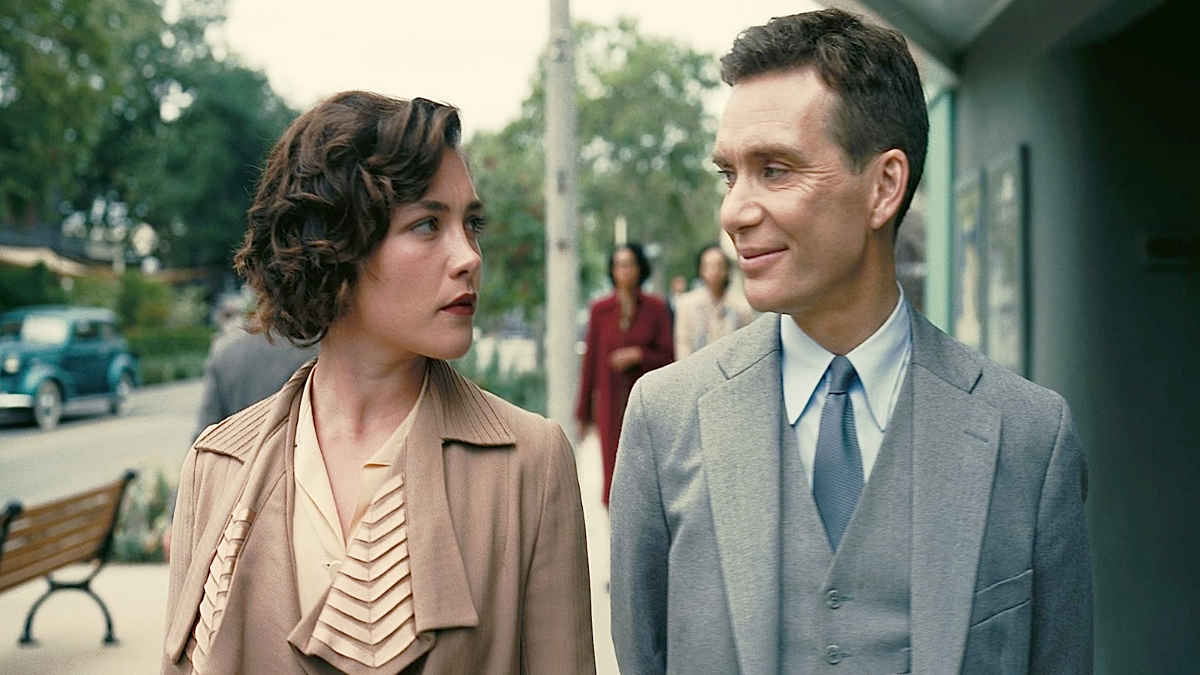This post contains spoilers for Oppenheimer and sensitive content.
At just 27 years old, Florence Pugh has already established a brilliant career in Hollywood, playing the lead in critically acclaimed films like Midsommar, Lady Macbeth, Little Woman, and more. Her most recent foray into Christopher Nolan‘s intellectual filmmaking landed her the part of WWII figure Jean Tatlock in the biographical thriller Oppenheimer. Pugh beautifully rules during the brief time she is on screen, but her character conceals a tragic and heartbreaking tale beneath her smart mind and attractive appearance.
The real Jean Tatlock was born in 1914 to an esteemed and well-known professor of English at the University of Michigan. She was among the handful of female students who attended Stanford Medical at her time and grew up to become a psychiatrist. Tatlock also worked as a reporter and writer for the Communist Party’s West Coast publication Western Worker, which eventually put her on the radar of the FBI. But what is the story behind her popular romantic relationship with J. Robert Oppenheimer, and her tragic death?
The relationship between Jean Tatlock and J. Robert Oppenheimer

Jean Tatlock and Oppenheimer met through Oppenheimer’s landlady, Mary Ellen Washburn, who was also a member of the Communist Party like Tatlock. Tatlock then began seeing Oppenheimer in 1936, when she was a graduate student at Stanford and Oppenheimer was a professor of physics at the University of California, Berkeley. The two were 26 and 36 at that time, respectively.
Tatlock and Oppenheimer started dating despite their ten-year age gap and had a passionate relationship fueled by both sides. Oppenheimer proposed to Tatlock twice, but she refused. He then eventually married German-American biologist Kitty Harrison in 1940, but historians speculate that their romance continued.
In a letter to Major General Kenneth D. Nichols, the General Manager of the United States Atomic Energy Commission, dated March 4, 1954, Oppenheimer described their relationship ahead of the 1954 security hearings:
“We were at least twice close enough to marriage to think of ourselves as engaged. Between 1939 and her death in 1944, I saw her very rarely.”
Oppenheimer named the first nuclear weapon test “Trinity” after one of John Donne’s poems introduced to him by Tatlock, as a tribute to Tatlock. He described his thought in response to Leslie Grooves’s letter in 1962, according to Richard Rhodes’ book “The Making of the Atomic Bomb”:
“I did suggest it… Why I chose the name is not clear, but I know what thoughts were in my mind. There is a poem by John Donne, written just before his death, which I know and love.”
Did Oppenheimer have an extramarital affair with Jean Tatlock after marriage?

Oppenheimer might have had an extramarital affair with Tatlock while he was working on the Manhattan Project. In the book “An Atomic Love Story: The Extraordinary Women in Robert Oppenheimer’s Life,” by Shirley Streshinsky and Patricia Klaus, it is mentioned that Oppenheimer and Tatlock spent the New Year together in 1941, and once met at Mark Hopkins Hotel in San Francisco.
The book also vividly describes Oppenheimer’s meeting with Tatlock two years later, on June 14, 1943, as chronicled in a HuffPost blog:
“Oppenheimer arrived at 9:45 pm [at a terminal in San Francisco], the FBI report reads. He rushed to meet a young lady, whom he kissed and they walked away arm in arm. They entered a 1935 green Plymouth coupe and the young lady drove. The car is registered to Jean Tatlock. She is five foot seven, 128 [pounds], long dark hair, slim, attractive… Drove to Xochiniloc Cafe, 787 Broadway, at 10 p.m. Cheap type bar, cafe, and dance hall operated by Mexicans. Had few drinks, something to eat, went to 1405 Montgomery where she lives on top floor… Appears to be very affectionate and intimate… At 11:30 lights went out.”
The book mentions that three months prior to this meeting, as Oppenheimer was departing from Berkley for Los Amos to work on the Manhattan Project, Tatlock had wanted to meet Oppenheimer, which he refused. Their reunion in 1943 lasted about 24 hours, according to the FBI officials, who were keeping tabs on Tatlock because of her connections with CPAs.
Despite the two meeting on limited occasions, the extramarital affair between the two is documented and thus true. As Oppenheimer reiterates during the 1954 security hearings: “We had been very much involved with one another and there was still very deep feeling when we saw each other.” This meeting resulted in Jean Tatlock being identified as his mistress and a known Communist in Lieutenant Colonel Boris Pash’s memo to the Pentagon recommending that Dr. Oppenheimer be refused a security clearance and removed as scientific director of the Manhattan Project.
How did Jean Tatlock die?

Jean Tatlock was suffering from clinical depression and was being treated at the Mount Zio facility. She died by suicide on January 4, 1944, at her apartment at 1405 Montgomery Street. An entire chapter is dedicated to documenting Tatlock’s death in Kai Bird and Martin Sherwin’s biography of Oppenheimer, “American Prometheus,” which is the source of Nolan’s screenplay.
Tatlock was found a day after her suicide when her father broke into her apartment. He found her “lying on a pile of pillows at the end of the bathtub, with her head submerged in the partly filled tub.” He also found her suicide note, which read:
“I am disgusted with everything… To those who loved me and helped me, all love and courage. I wanted to live and to give and I got paralyzed somehow. I tried like hell to understand and couldn’t… I think I would have been a liability all my life—at least I could take away the burden of a paralyzed soul from a fighting world.”
When Peer De Silva, the head of security for the Los Alamos laboratory informed Oppenheimer of Tatlock’s death, he wept and “went on at considerable length about the depth of his emotion for Jean, saying there was really no one else to whom he could speak.” The incident is described in Peer De Silva’s notes on an unwritten manuscript titled “The Bomb Project: Mysteries That Survived Oppenheimer.”
Tatlock’s autopsy determined that the cause of death was asphyxiation by drowning and “a faint trace of chloral hydrate” was found in her system. The report raised many suspicions that she was rather murdered because of her affiliations to the Communist party, but no such claims found any solid evidence to be found true. She was later cremated by her father, John Tatlock.











Published: Jul 21, 2023 07:18 am